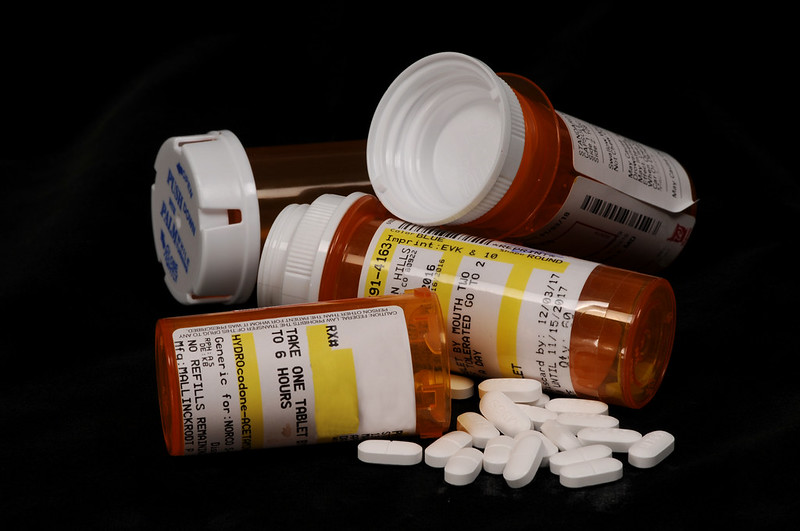In the past on this site, some studies have discussed how dentists and oral surgeons may be prescribing too many opioids to their patients. For example see the posts Important Studies on Opioid Prescribing: Implications for Dentistry, Do Oral Surgeons Give Too Many Opioids for Wisdom Teeth Removal? and Opioid Prescriptions From Dental Clinicians for Young Adults and Subsequent Opioid Use and Abuse. Now a new study has recently appeared in the American Journal of Preventative Medicine titled “Overprescribing of Opioids to Adults by Dentists in the U.S., 2011–2015”, written by Suda et al. (pp. 1−14, 2019 in press). The study found that between 25% and 50% of opioids prescribed to adults by dentists in the U.S. are overprescribed. This is important because dentists are responsible for prescribing 10% of all opioids to patients in the U.S.
The authors feel that urgent attention to the dental prescribing of opioids and evidence-based guidelines tailored towards dentists are needed to help address the opioid epidemic. They mention how in 2016 the Centers for Disease Control and Prevention (CDC) issued guidelines recommending limiting opioids to a 3 days’ supply for patients who have acute pain (specifically no more than 10 mg of hydrocodone/acetaminophen tablets every 6 hours for 3 days). However, in the article by Suda et al. the authors used data in their study prior to the 2016 CDC guidelines. Specifically they examined adults receiving dental care from 2011 to 2015 in the databases: Truven Health MarketScan Commercial Claims and Encounters, Medicare Supplemental, and Coordination of Benefits Research. A total of 1.4 million adults over 18 years of age had a new prescription for an opioid written by a dentist in this data. However, the authors applied some restrictions on the study population which resulted in 542,598 dental visits in their final analysis. Among these dental visits included in the final analysis, 53% were for oral and maxillofacial surgery dental procedure codes.
The authors found that 29.3% of dental visits had an opioid dosage that exceeded the recommendation. In the cases were the strength of the opioids was too much, the patients were more likely to be male, 18 to 34 years old, and located in the south region of the U.S. These prescribed opioids were primarily hydrocodone (76%), followed by codeine (12%) and oxycodone (10%). The authors also found that 53% of patients having dental visits were prescribed opioids exceeding the recommended 3 day supply of opioids by the CDC. Patients located in the Northeast of the U.S. were found to have decreased odds of exceeding the recommended 3 days supply by the CDC while those patients in the South region of the U.S. had increased odds compared with those patients in the Midwest region of the U.S. Further, male patients were more likely to exceed the recommended 3 day supply by the CDC. The authors also found that 30% of patients having dental visits classified as mild pain intensity visits were prescribed opioids exceeding the recommended 3 days supply of opioids by the CDC. Because the authors used data that occurred before the CDC recommendations came out in 2016, they also made adjustments to account for previous recommendations during 2011 to 2015 which they state is 2 days of opioids. With this adjustment they found that 67.7% of opioids were prescribed in higher dosages than recommended (when using a 2 days supply of opioids as the comparison). By incorporating the pain anticipated after the dental visit – where severe pain included for example a bony impaction surgery, moderate pain included for example a tooth implant, and minimal pain included for example routine endodontics and only giving those in the minimal pain category 1 days supply of opioids instead of 2 days supply of opioids in the severe and moderate pain categories – the authors found that 87.4% of opioids exceeded the recommended days supply (either one or two days by using the earlier definitions).

The authors state:
“The results also demonstrate that, unlike national trends opioid overprescribing by dentists is not changing and may be increasing… Taken together with previous reports indicating that half of the opioids prescribed for dental procedures such as tooth extractions are not used, the availability of unused opioids prescribed in this setting is likely increasing and associated with nonmedical opioid use.”
The authors also mention how their results support prior studies that identified opioids were prescribed by dentists when instead giving the patients anti-inflammatory agents (such as nonsteroidal anti-inflammatory drugs) would have been superior. In the article by Suda et al. it is also mentioned how several interventions have been shown to limit opioid prescribing by dentists including a state prescription drug monitoring program and pharmacist-delivered audit and feedback. However they mention that dentists so far have had low participation in these programs. Thus, the authors feel that evidence-based interventions for dentists and oral pain require more research but are urgently needed. Several limitations of the study are noted such as using patients with commercial dental insurance meaning the results may not apply to those who are uninsured or those on Medicaid or Medicare benefits. A further limitation is that pharmacy claims cannot be directly linked with the healthcare encounter and thus what was termed as a dental visit may have possibly been a prescription given by a different type of doctor or medical professional.

4 thoughts on “Dentists Overprescribing Opioids to Adults in the U.S.”